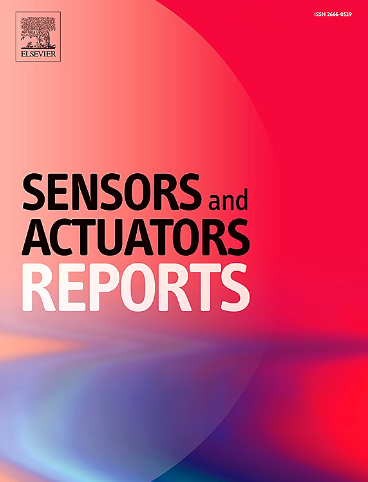Molecularly imprinted poly(o-aminophenol)-based electrochemical sensor for the quantitative detection of a VP28 biomarker for white spot syndrome virus
IF 7.6
Q1 BIOTECHNOLOGY & APPLIED MICROBIOLOGY
引用次数: 0
Abstract
White spot syndrome virus (WSSV) is a deadly pathogen that can cause mass mortality within several days. VP28, known as a biomarker of WSSV, accounts for over half of the total envelope protein. It plays a crucial role in viral infection and is a useful diagnostic indicator for immunological detection.
Here, we developed a molecularly imprinted polymer (MIP)-based electrochemical sensor using a gold nanostructured electrode and assessed its performance in detecting VP28. The electropolymerized poly(o-aminophenol) film supplies specific binding sites complementary to VP28. The molecularly imprinted cavities were examined using electrochemical analysis to confirm their ability to recognize the target molecule. The sensor generates a response signal through label-free sensing with a redox probe. It demonstrated a detection limit of 7.01 ng/mL (S/N = 3) and an imprinting factor of 4.25 at 0.78–50 ng/mL concentrations. The selectivity study revealed a response signal 4.5 times higher for the target molecule than for interfering substances. Compared with the standard PCR method for real samples, the MIP-based sensor performed similarly according to virus concentration. These findings suggested that the MIP-based sensor is a simple and suitable alternative to conventional WSSV detection methods. This electrochemical sensing platform with electropolymerization of the molecularly imprinted polymer can promote the detection and monitoring of WSSV expressing VP28.
基于分子印迹聚邻氨基酚的电化学传感器定量检测白斑综合征病毒VP28生物标志物
白斑综合征病毒(WSSV)是一种致命的病原体,可在几天内造成大量死亡。VP28是WSSV的生物标志物,占总包膜蛋白的一半以上。它在病毒感染中起着至关重要的作用,是一种有用的免疫检测诊断指标。在此,我们利用金纳米结构电极开发了一种基于分子印迹聚合物(MIP)的电化学传感器,并评估了其检测VP28的性能。电聚合的聚邻氨基酚薄膜提供了与VP28互补的特定结合位点。利用电化学分析对分子印迹空腔进行了检测,以确认其识别靶分子的能力。该传感器通过氧化还原探针的无标签传感产生响应信号。在0.78 ~ 50 ng/mL浓度下,检测限为7.01 ng/mL (S/N = 3),印迹因子为4.25。选择性研究表明,靶分子的响应信号是干扰物质的4.5倍。与真实样品的标准PCR方法相比,基于mip的传感器根据病毒浓度的表现相似。这些发现表明,基于mip的传感器是传统WSSV检测方法的一种简单而合适的替代方法。该电化学传感平台利用分子印迹聚合物的电聚合,可促进表达VP28的WSSV的检测和监测。
本文章由计算机程序翻译,如有差异,请以英文原文为准。
求助全文
约1分钟内获得全文
求助全文
来源期刊

Sensors and Actuators Reports
Multiple-
CiteScore
9.60
自引率
0.00%
发文量
60
审稿时长
49 days
期刊介绍:
Sensors and Actuators Reports is a peer-reviewed open access journal launched out from the Sensors and Actuators journal family. Sensors and Actuators Reports is dedicated to publishing new and original works in the field of all type of sensors and actuators, including bio-, chemical-, physical-, and nano- sensors and actuators, which demonstrates significant progress beyond the current state of the art. The journal regularly publishes original research papers, reviews, and short communications.
For research papers and short communications, the journal aims to publish the new and original work supported by experimental results and as such purely theoretical works are not accepted.
 求助内容:
求助内容: 应助结果提醒方式:
应助结果提醒方式:


